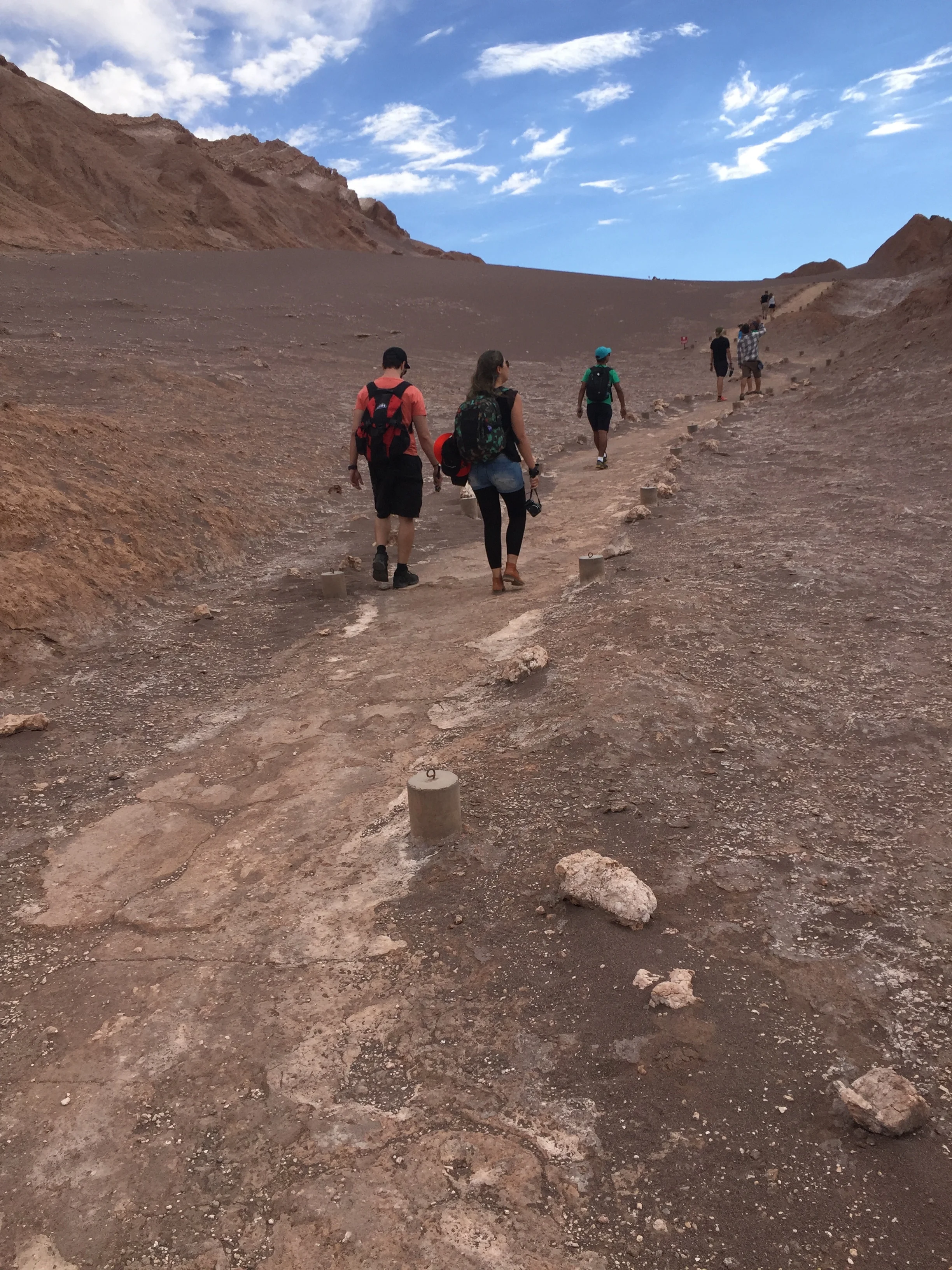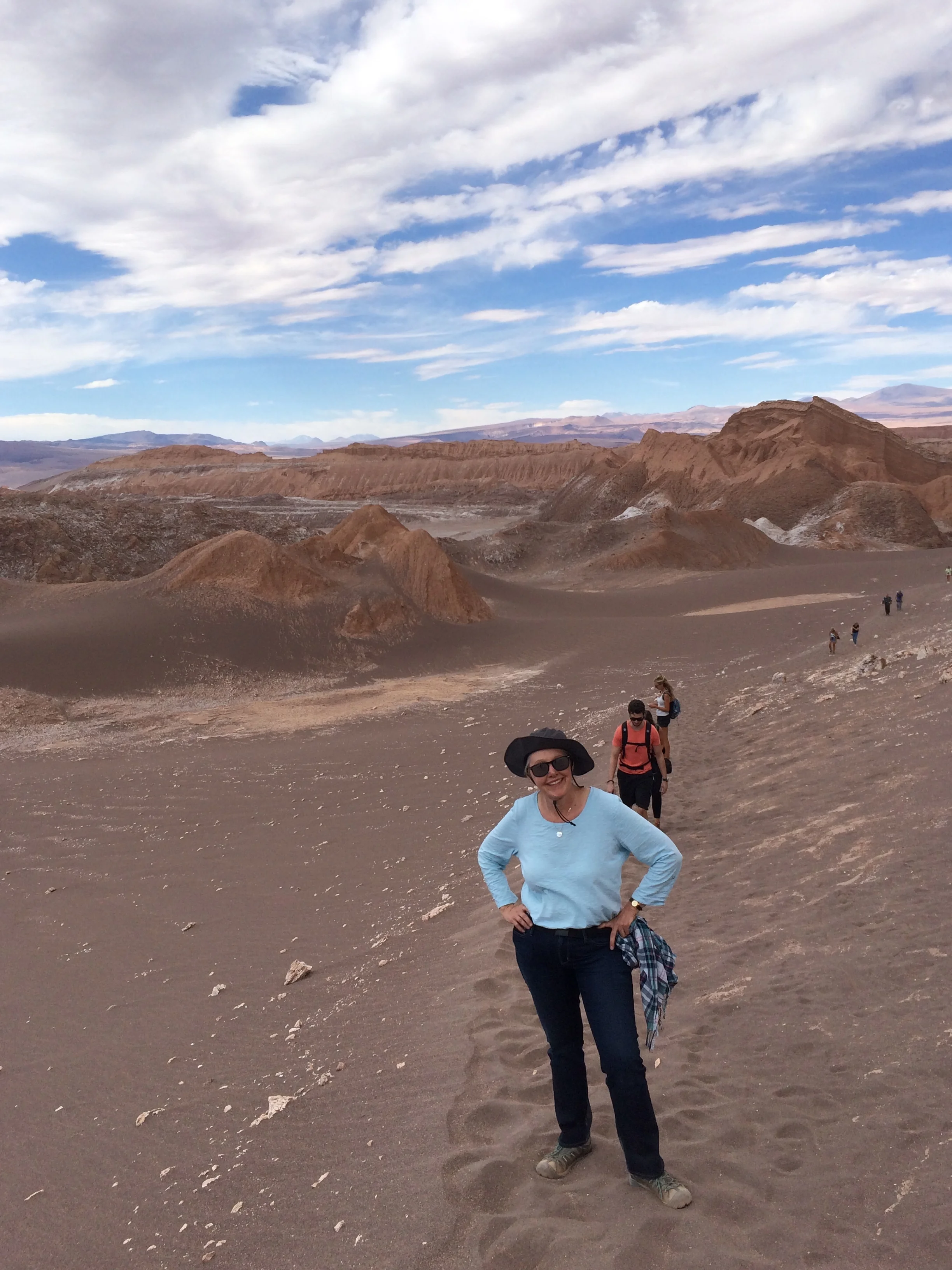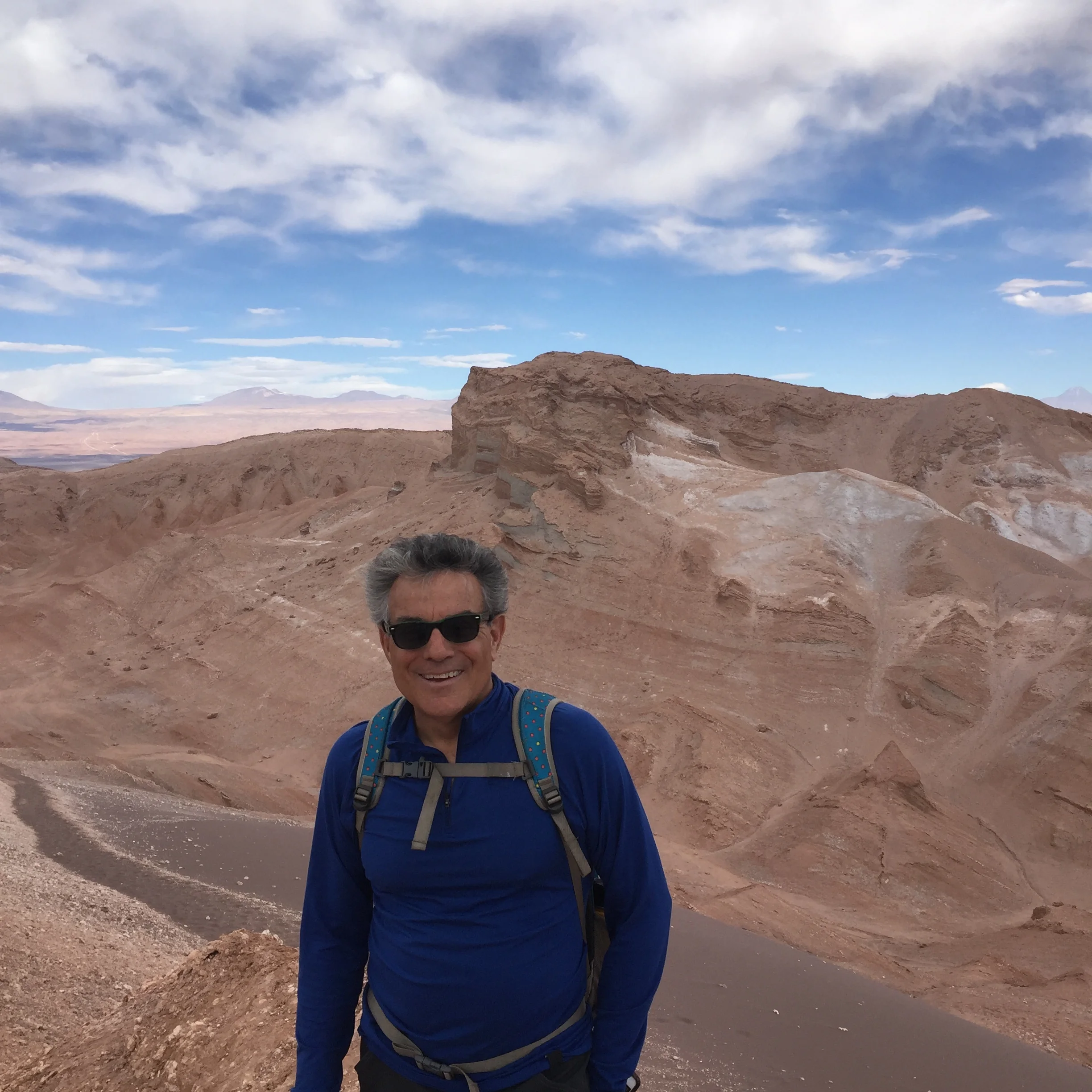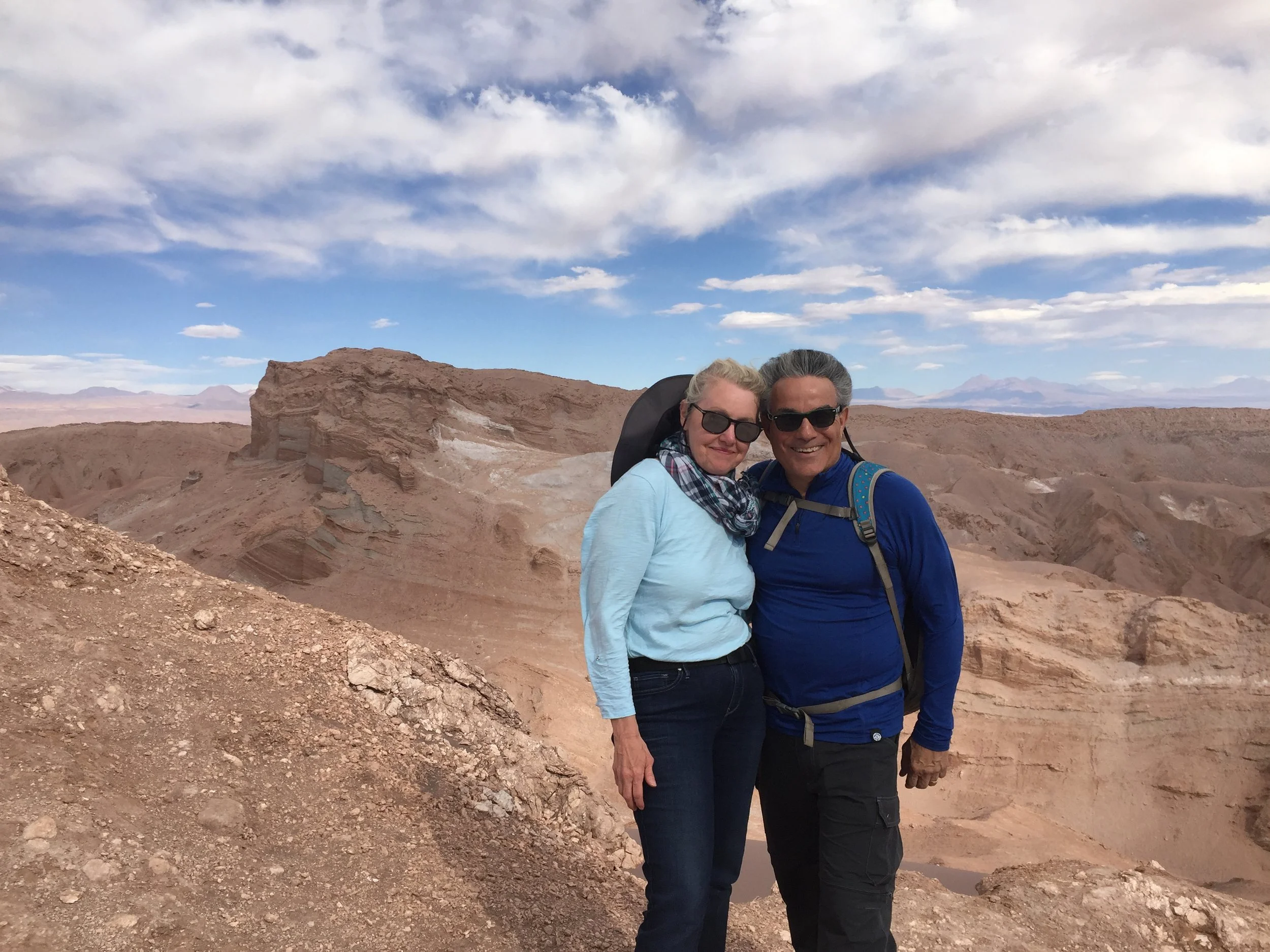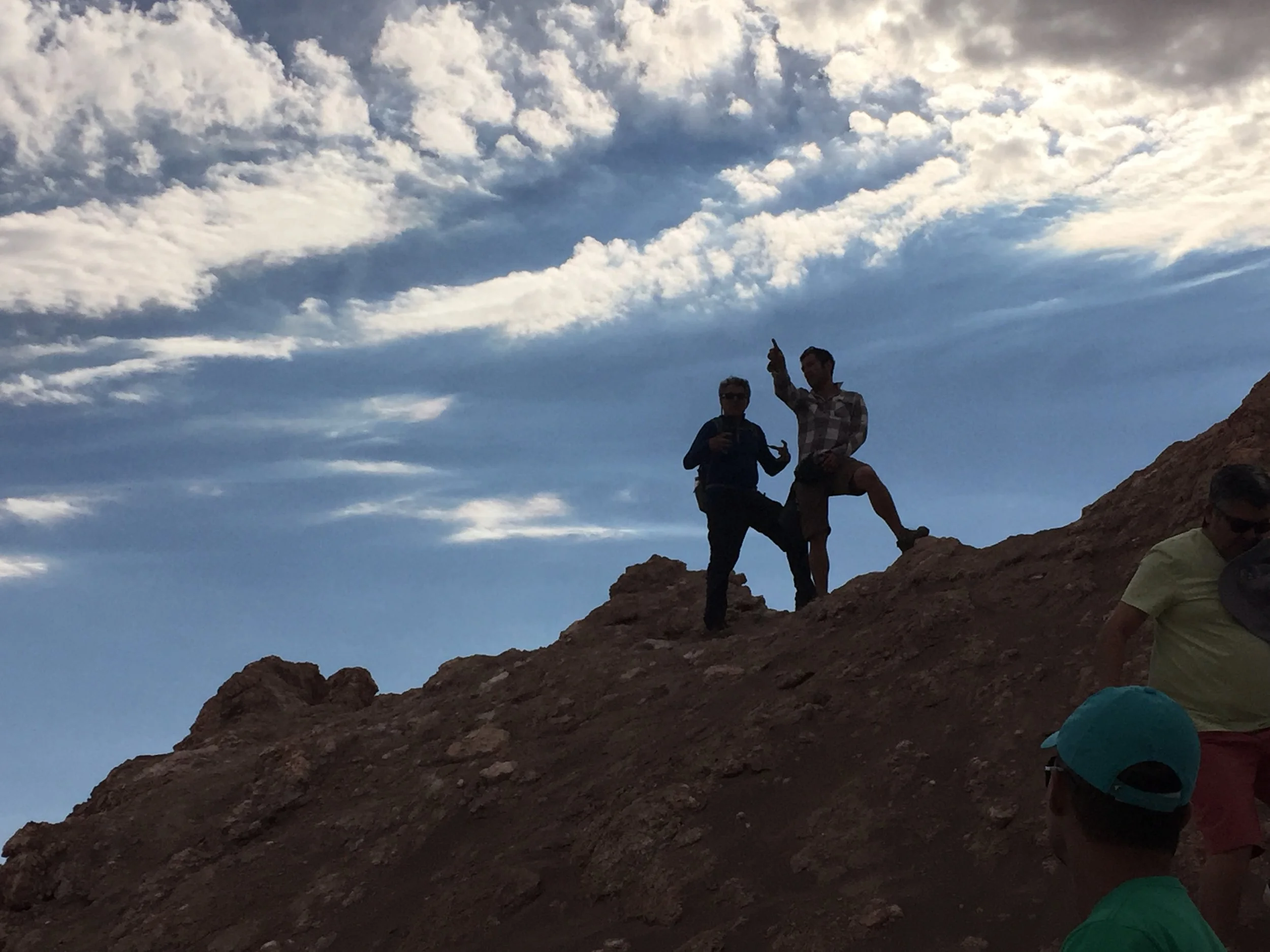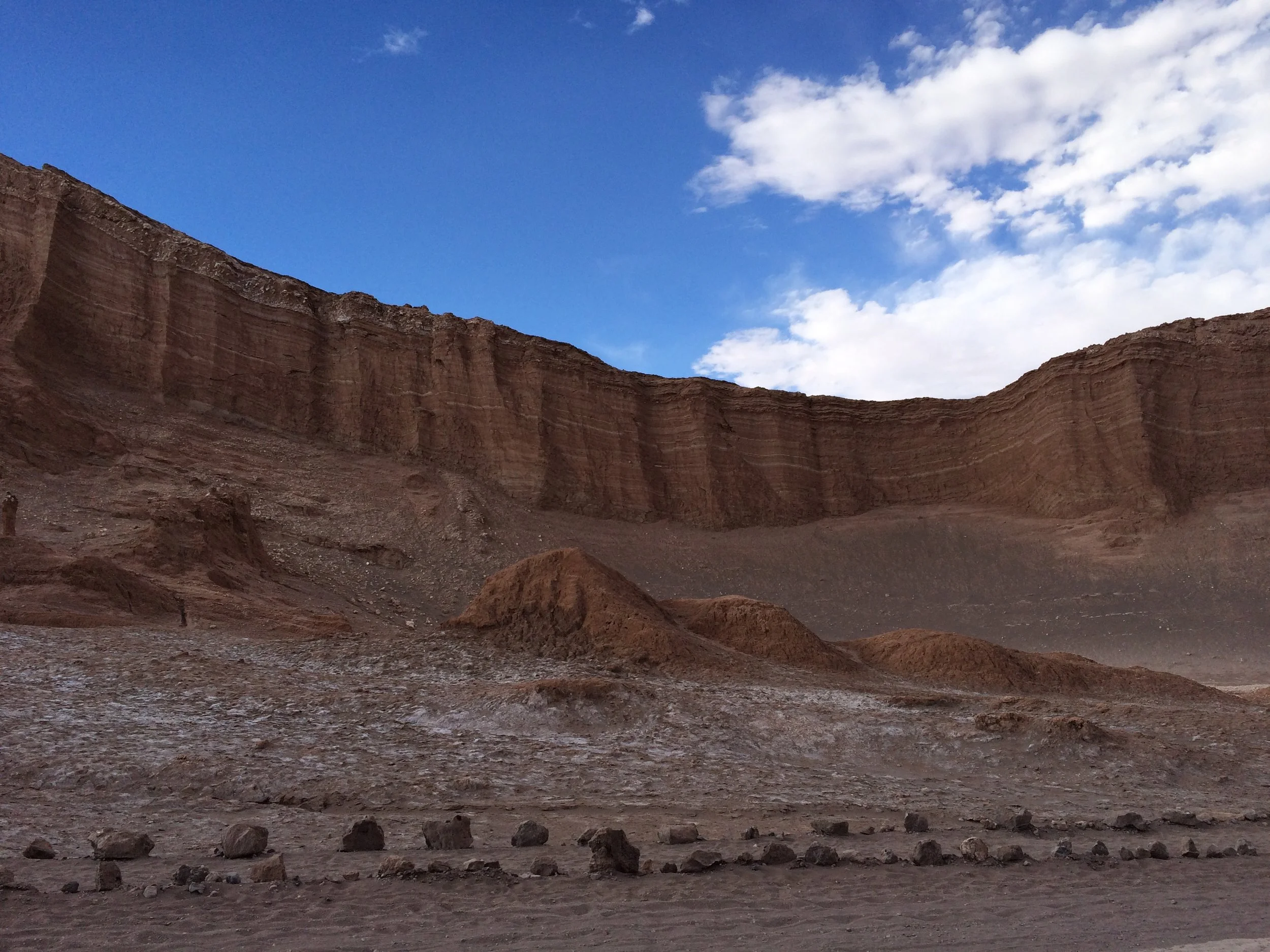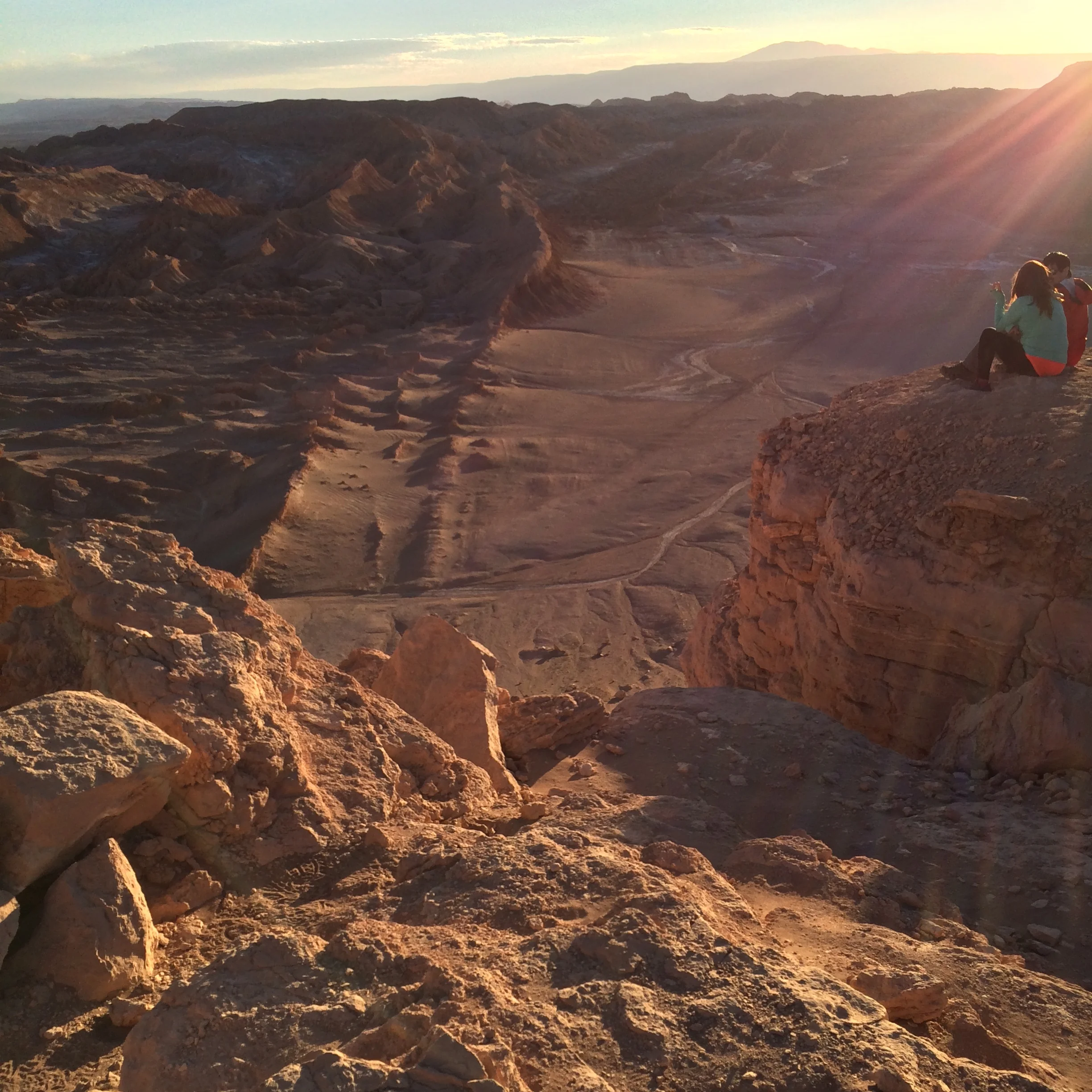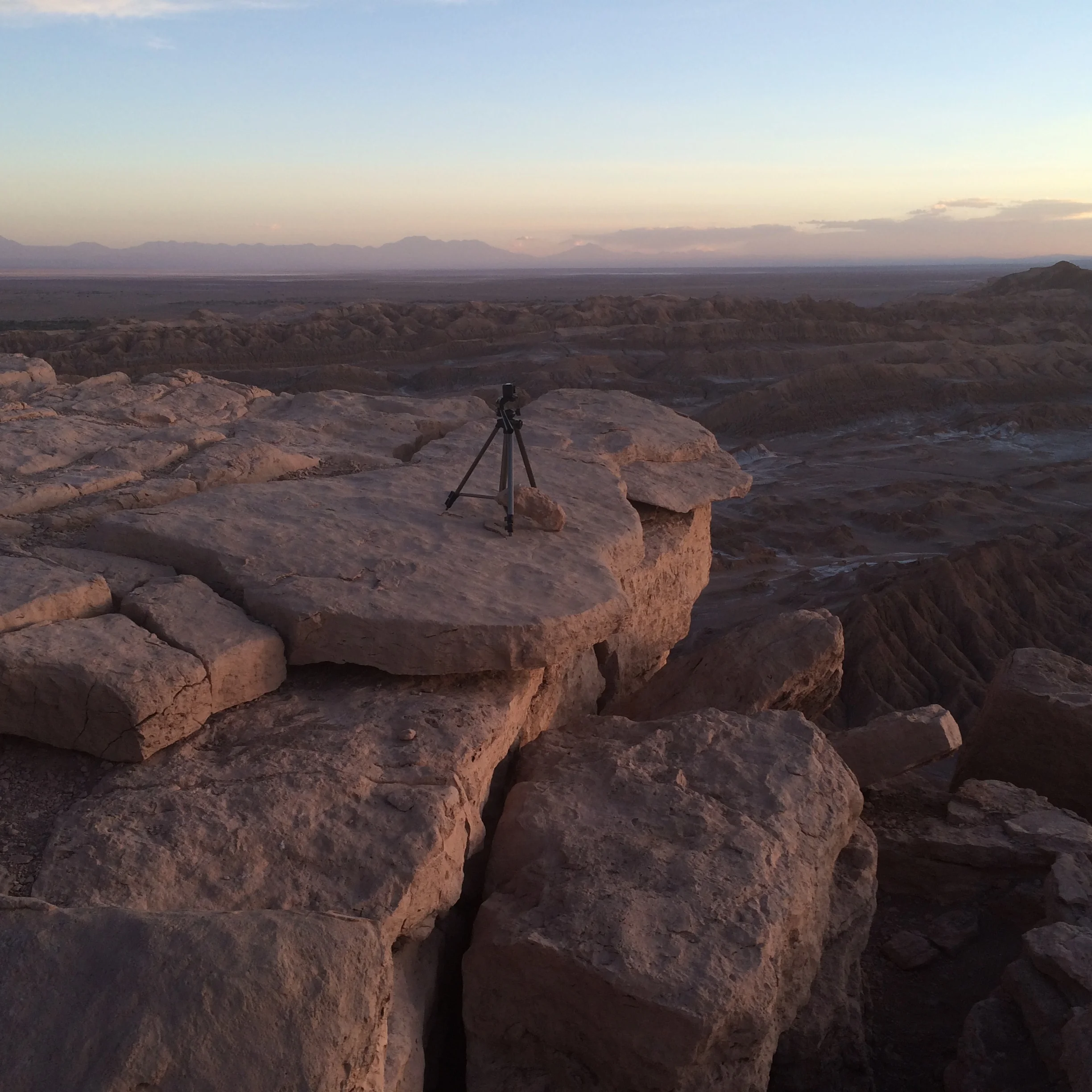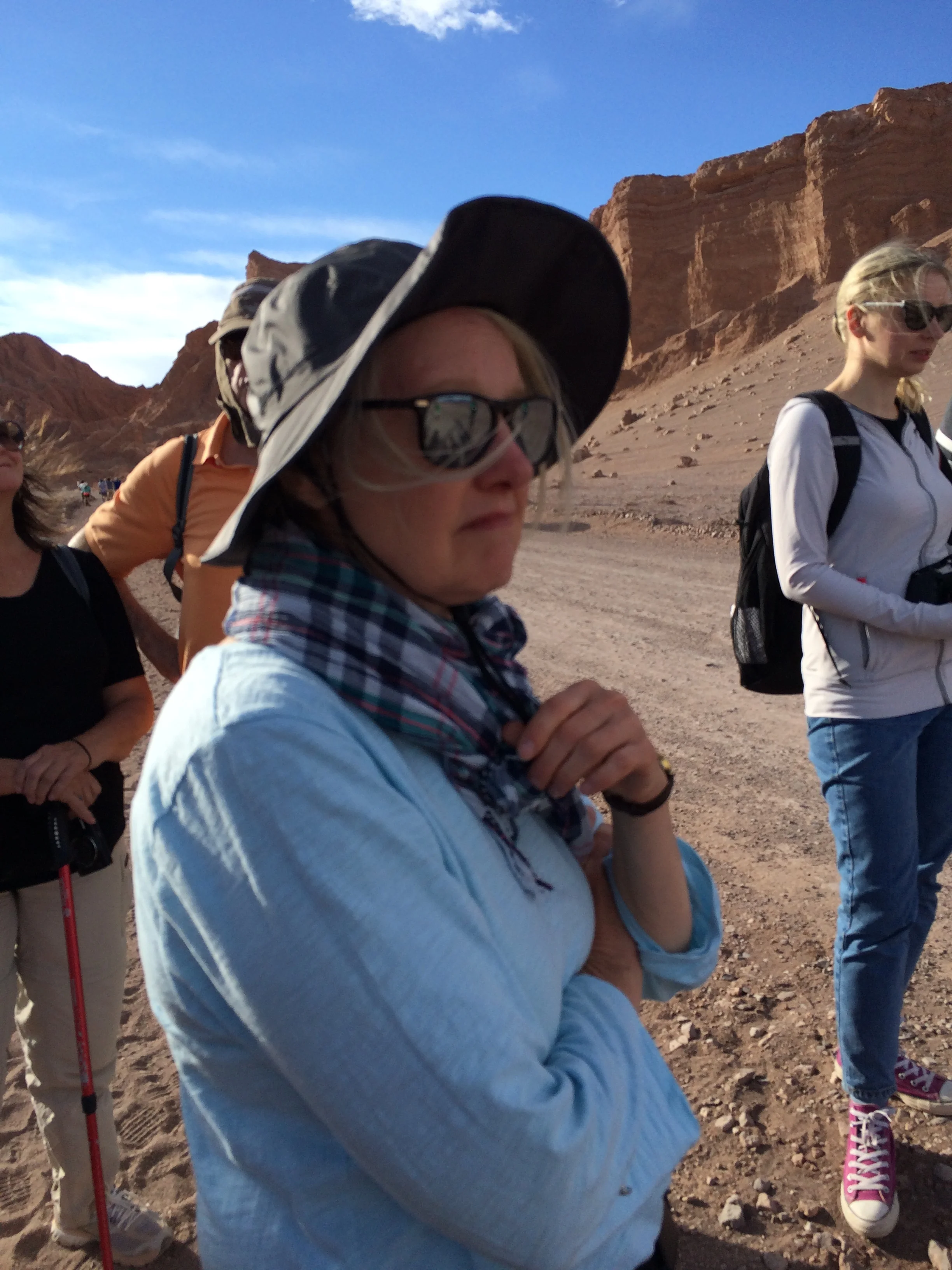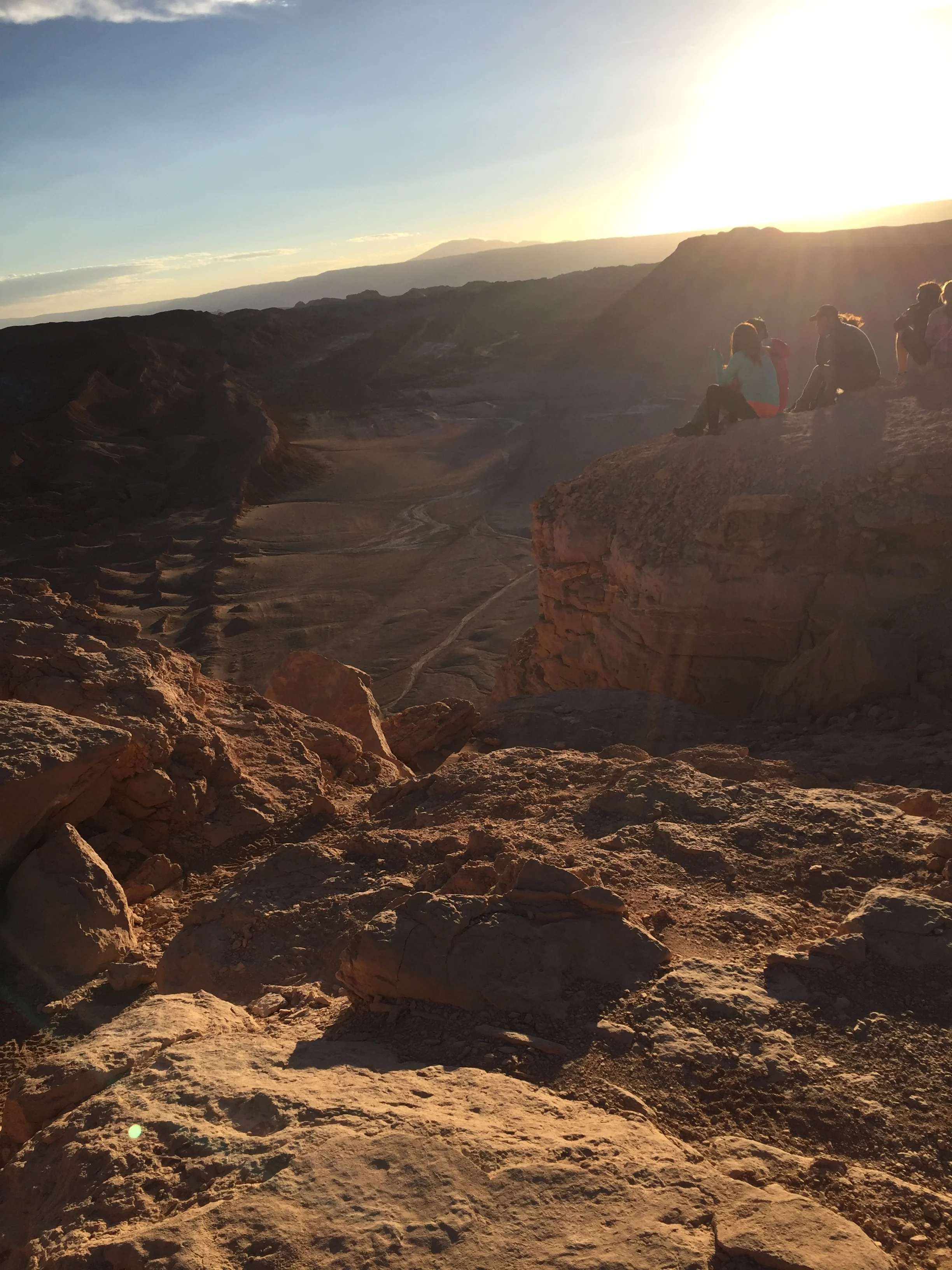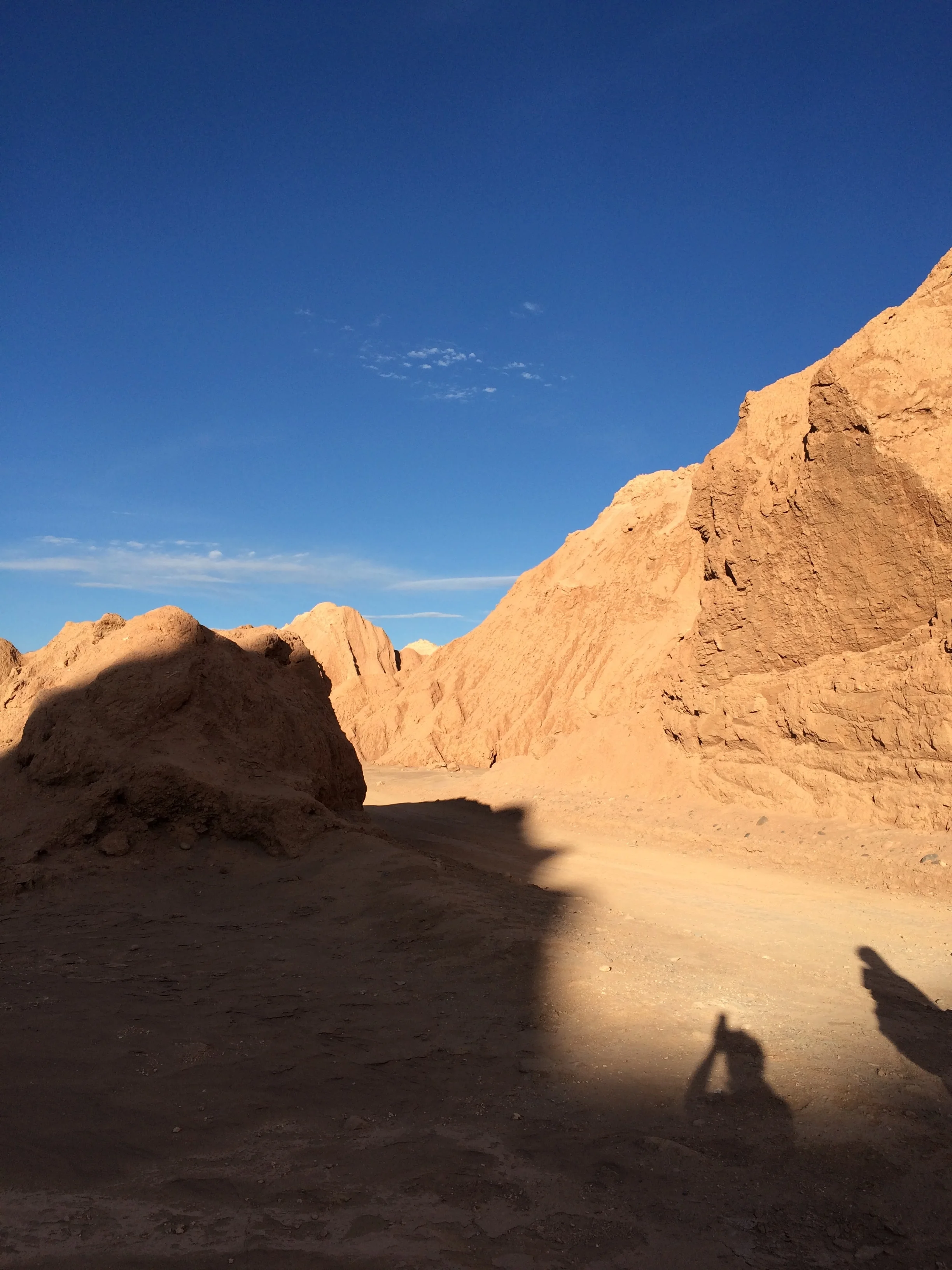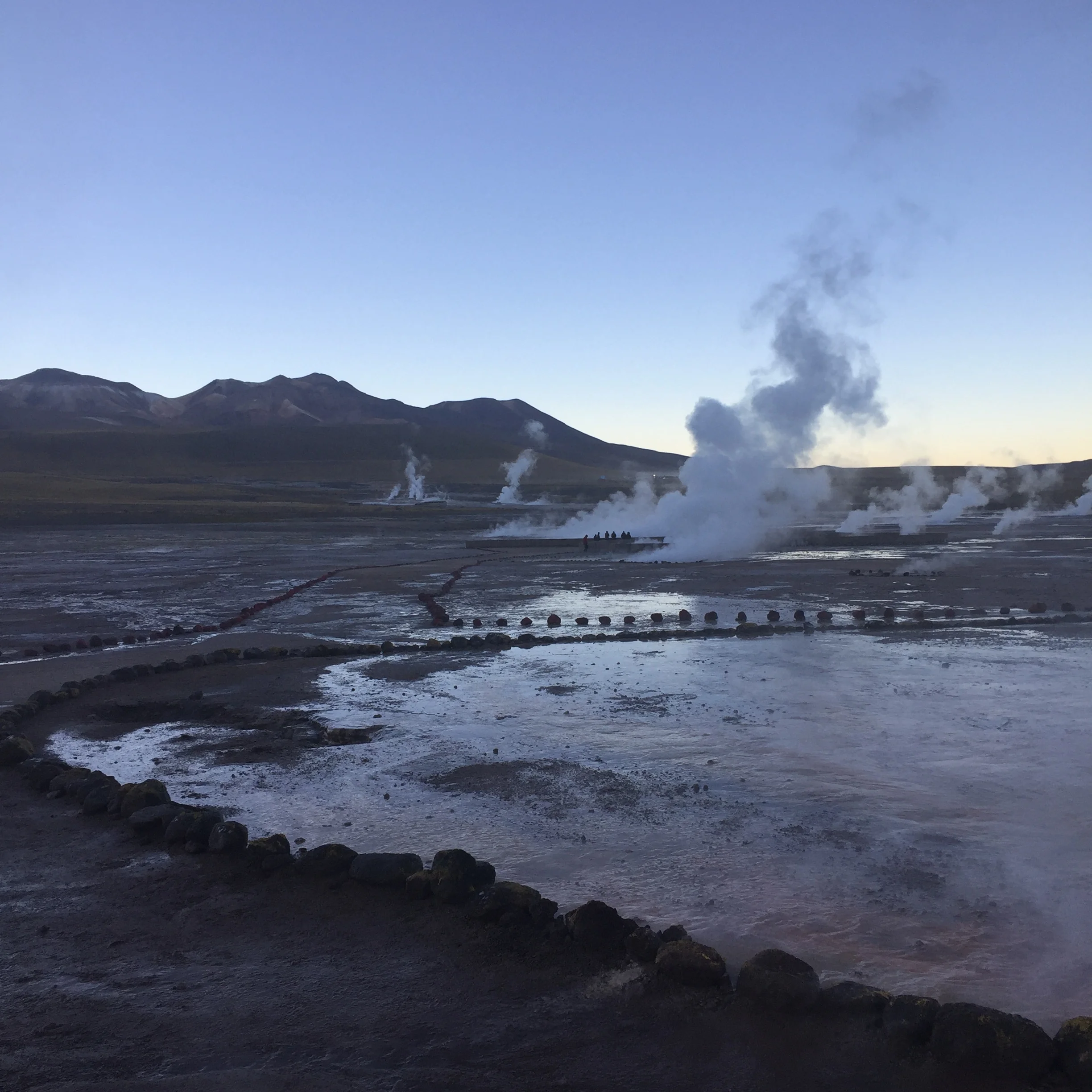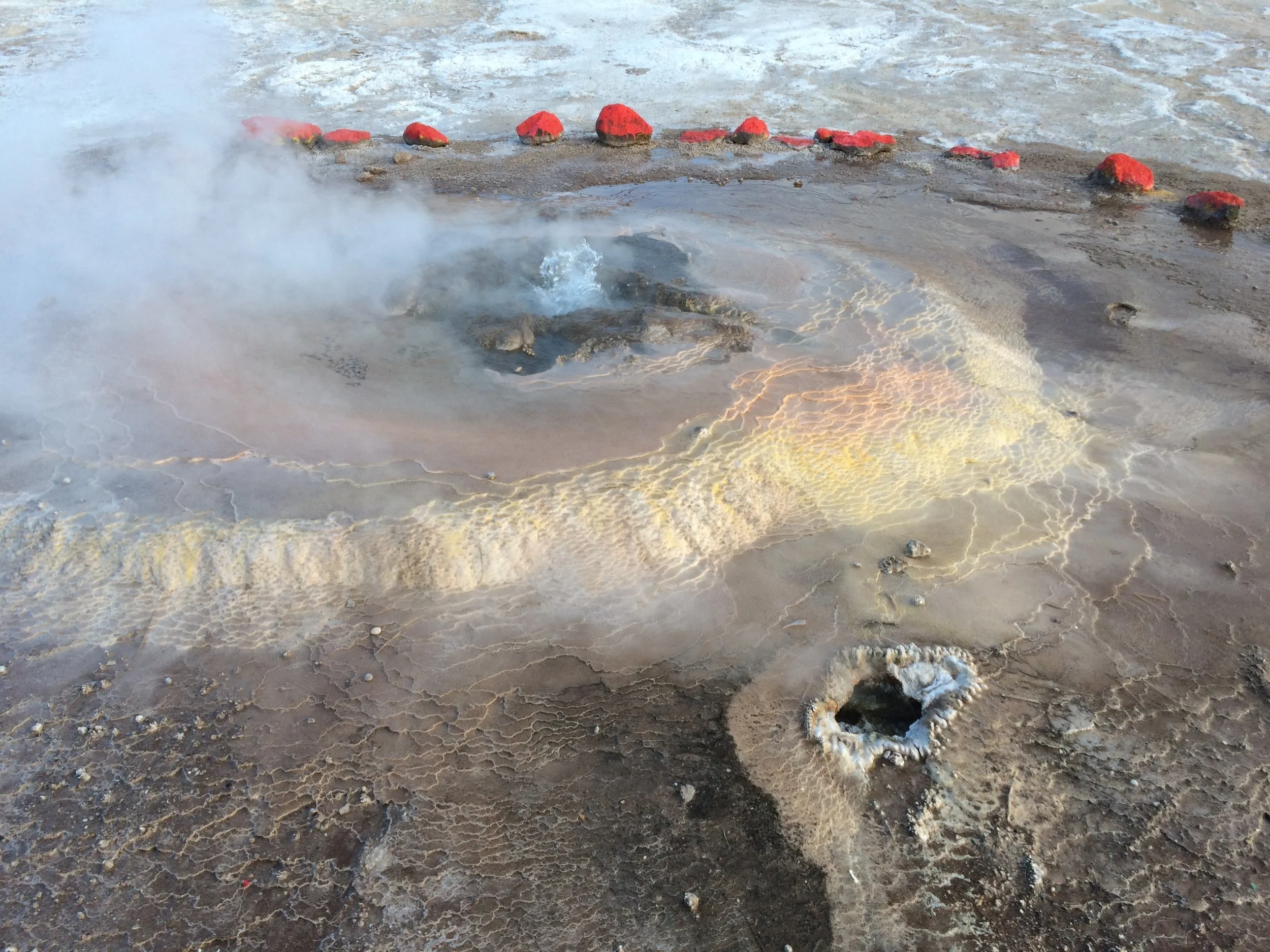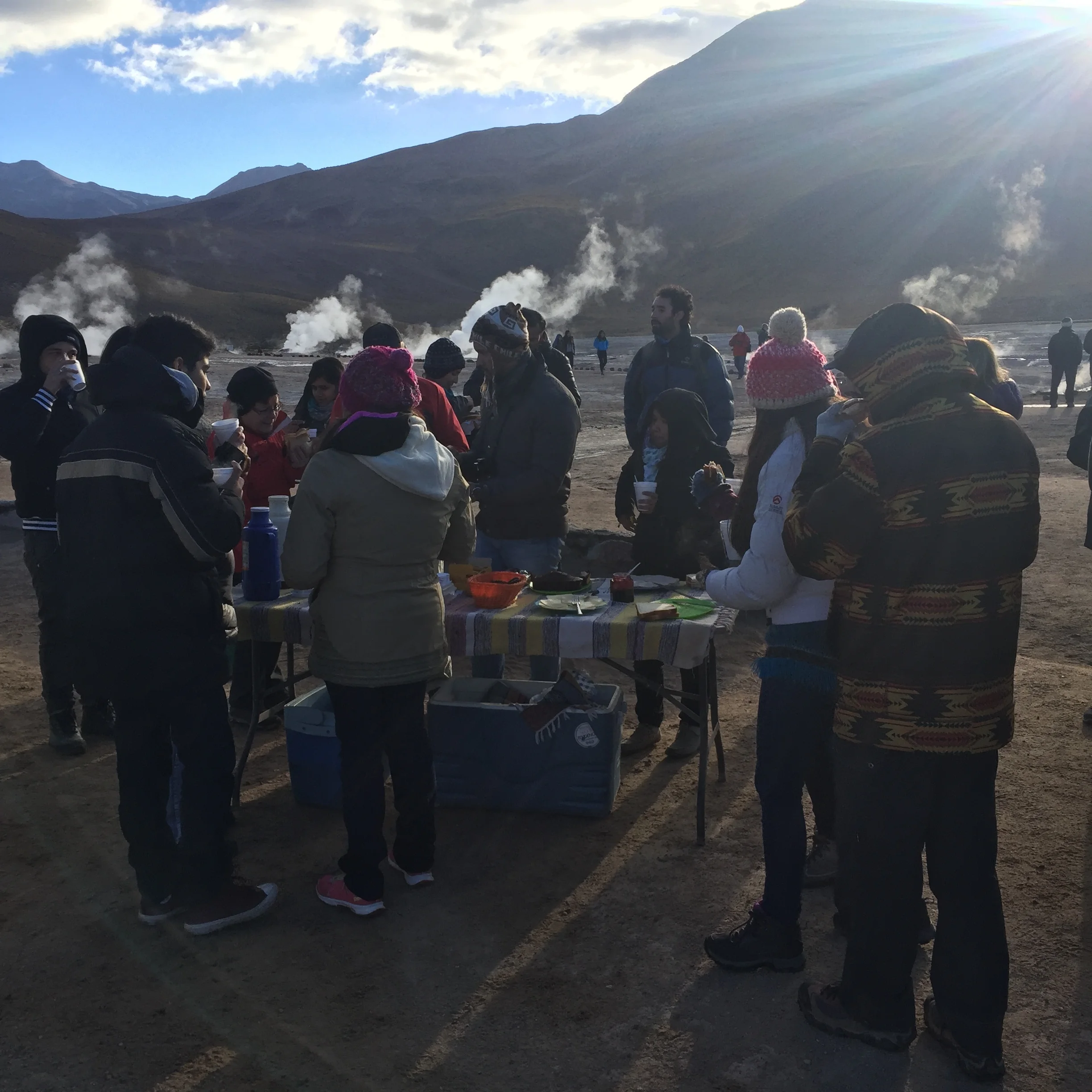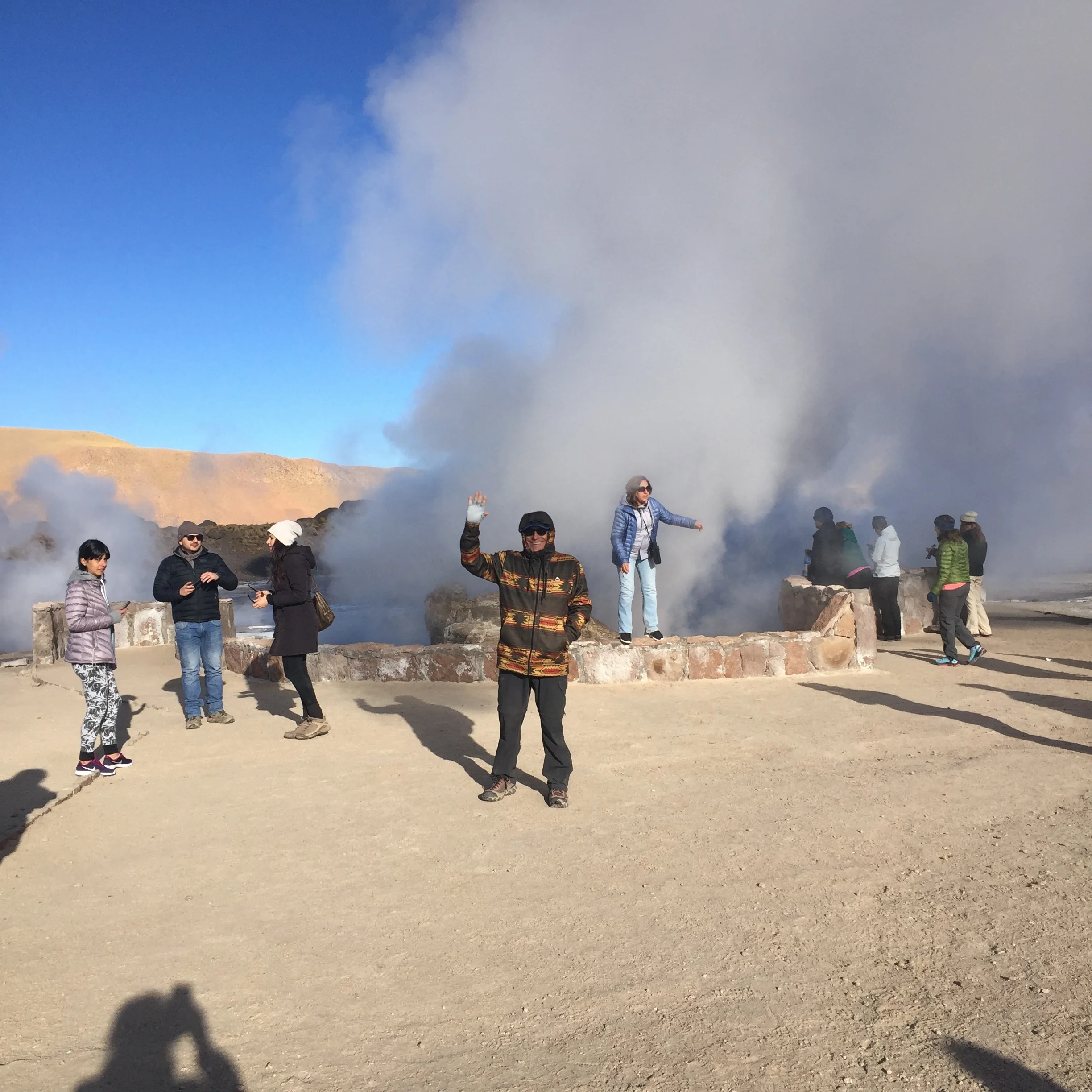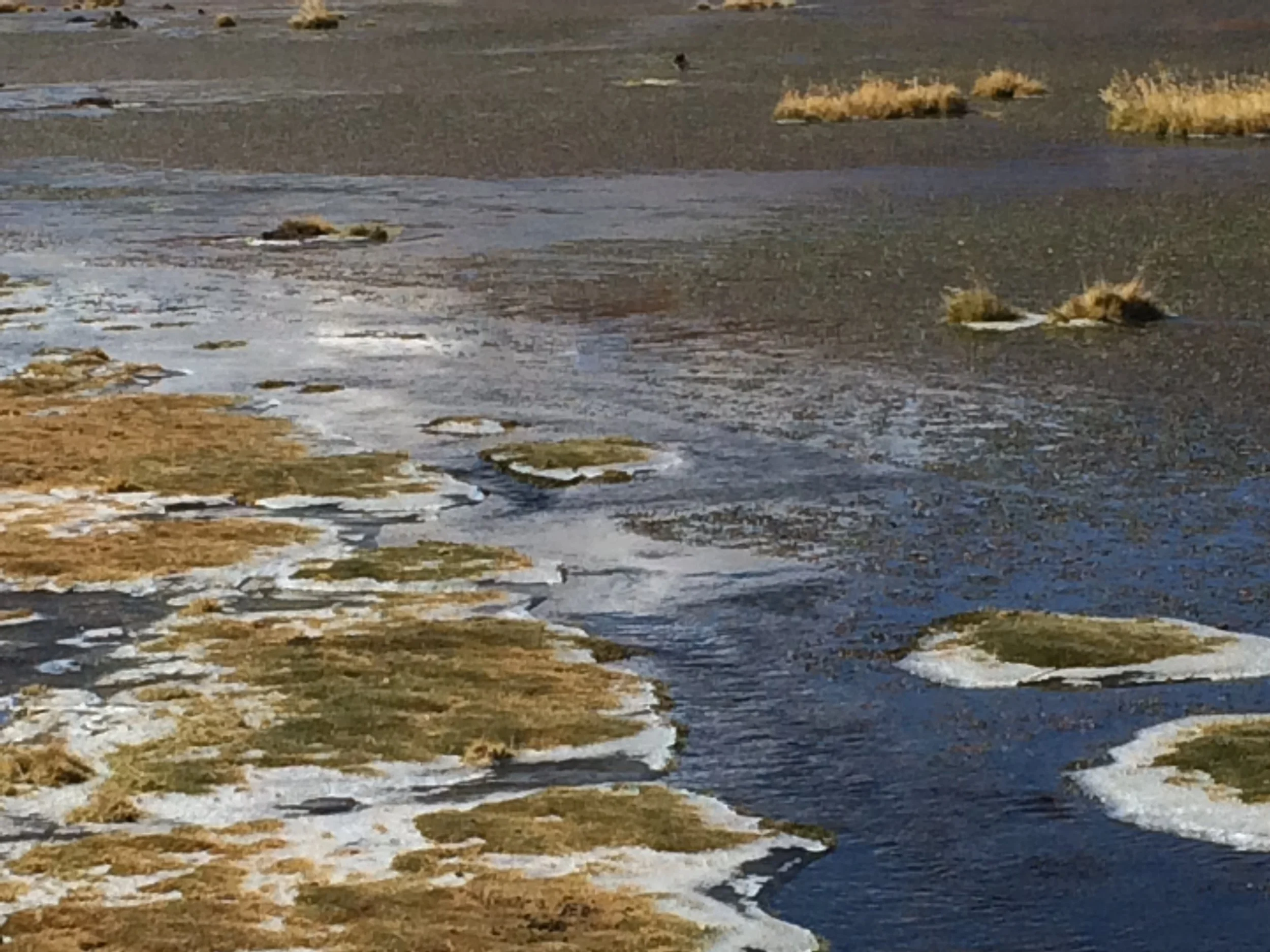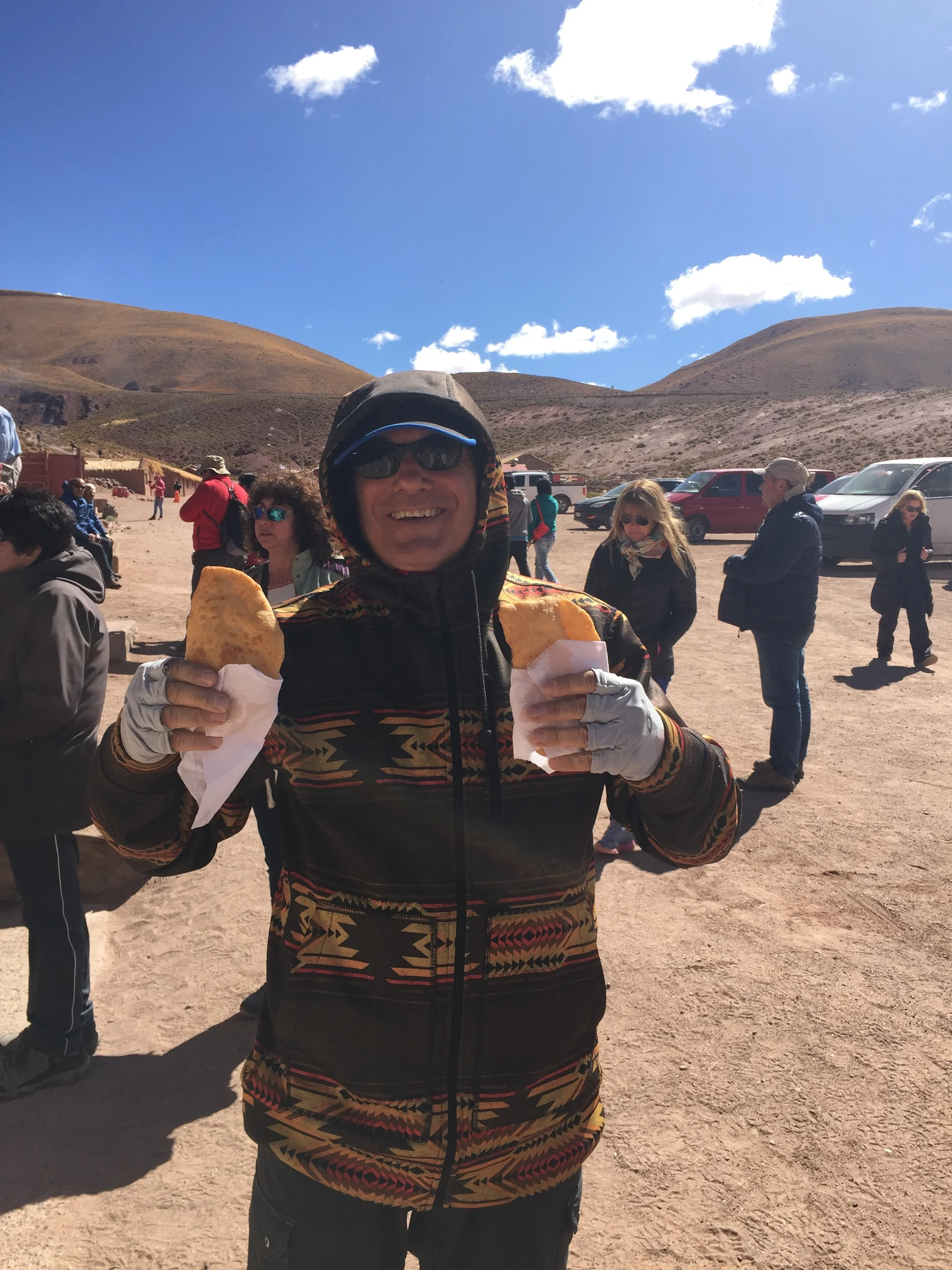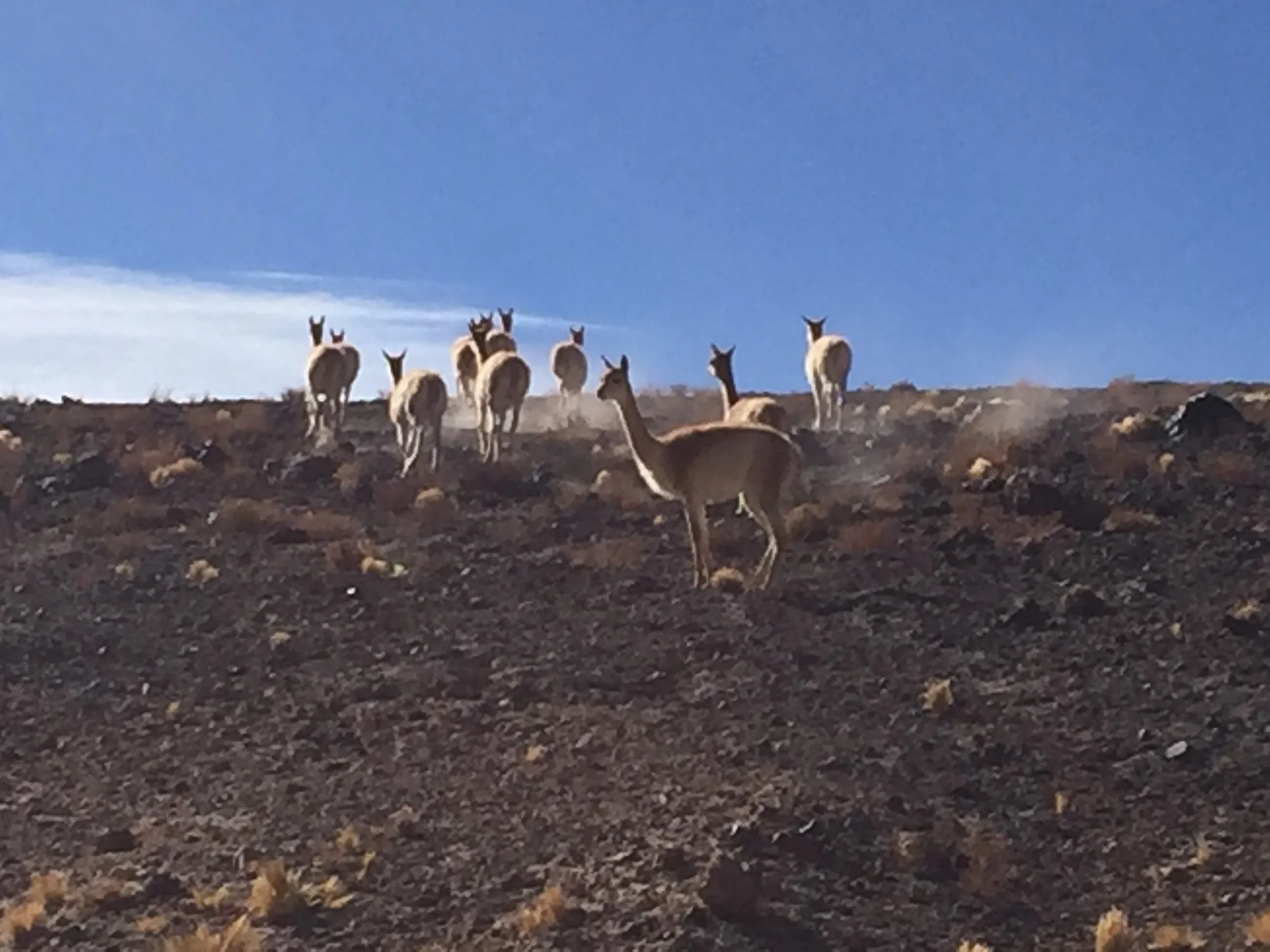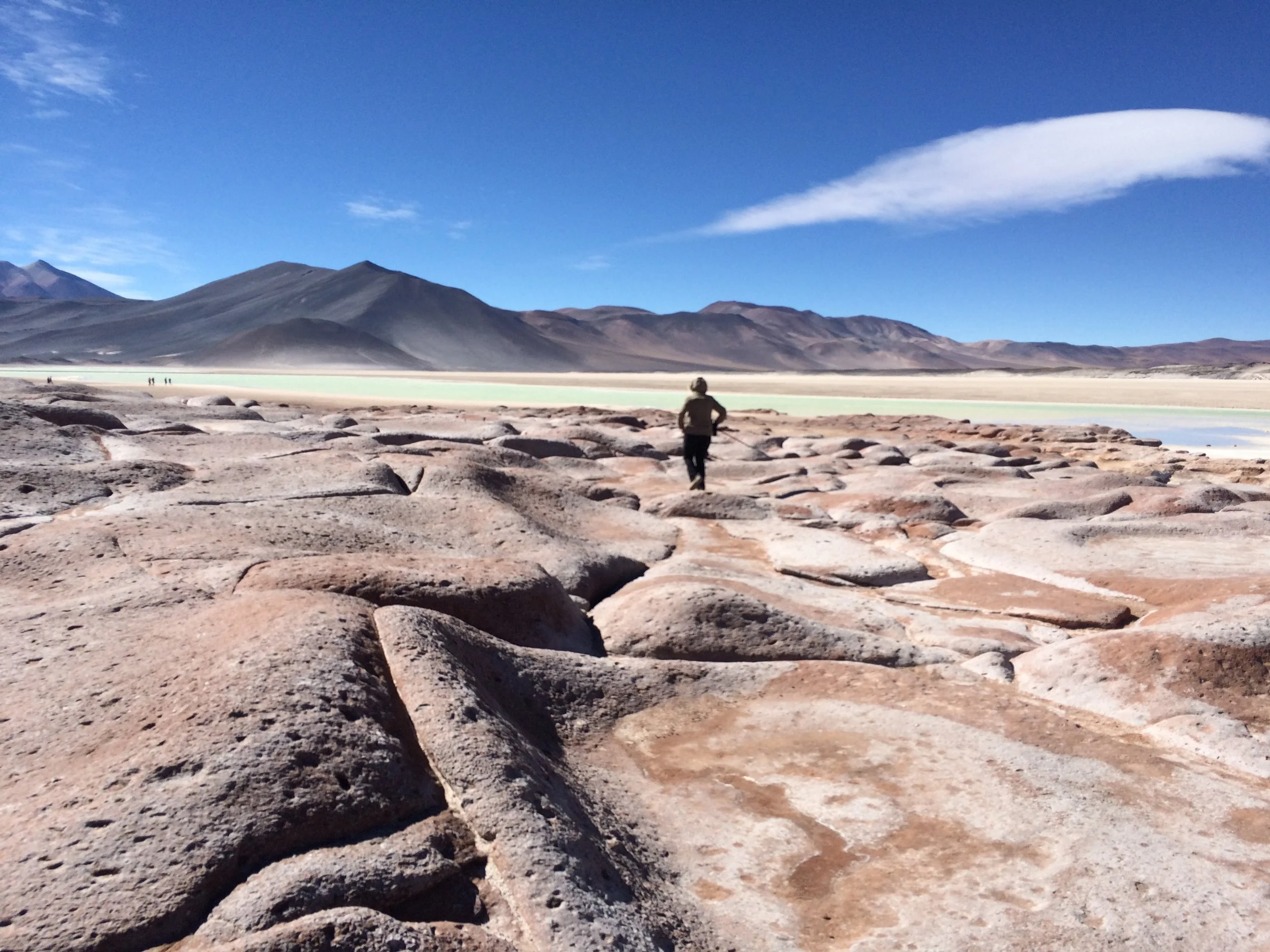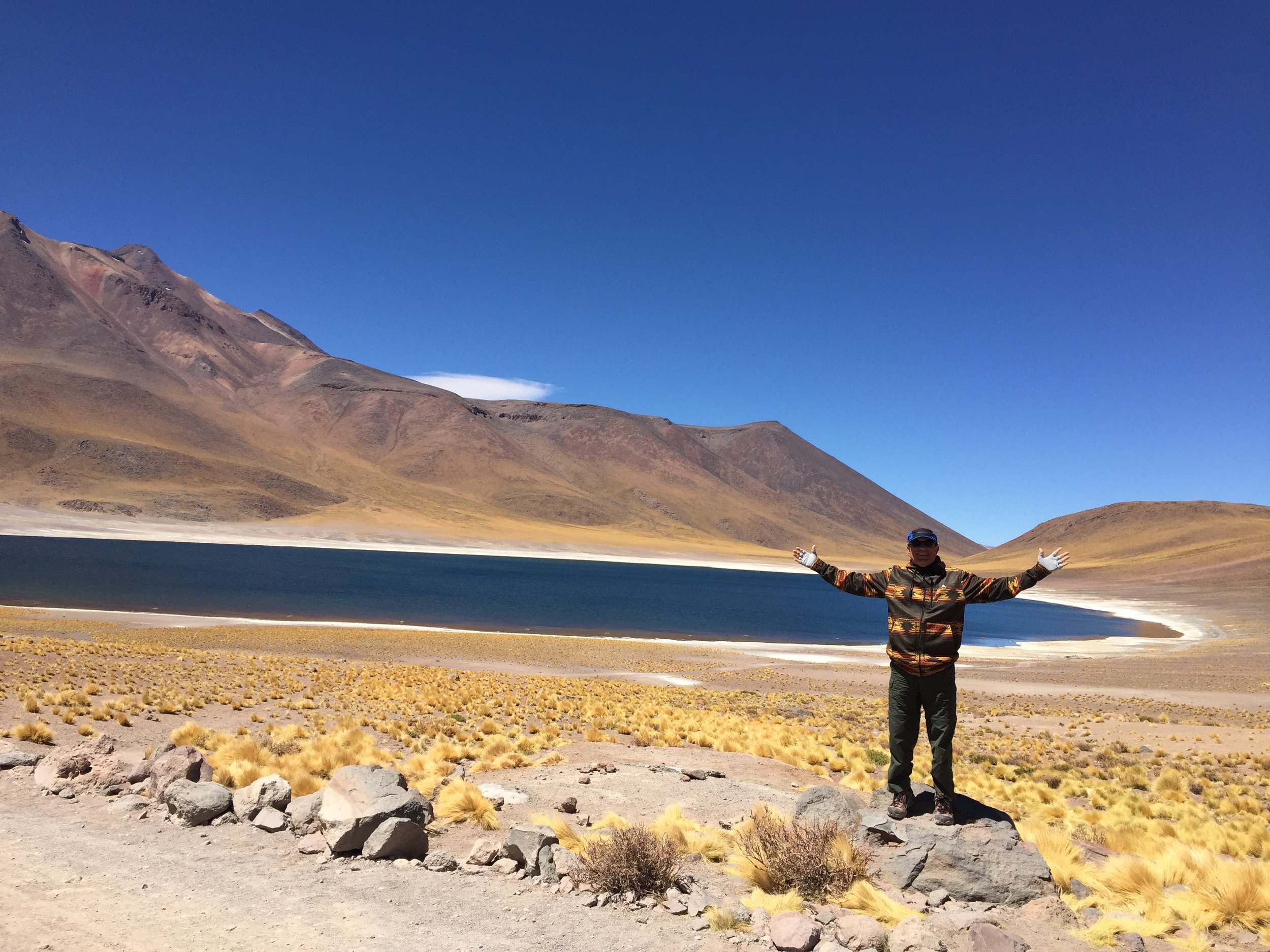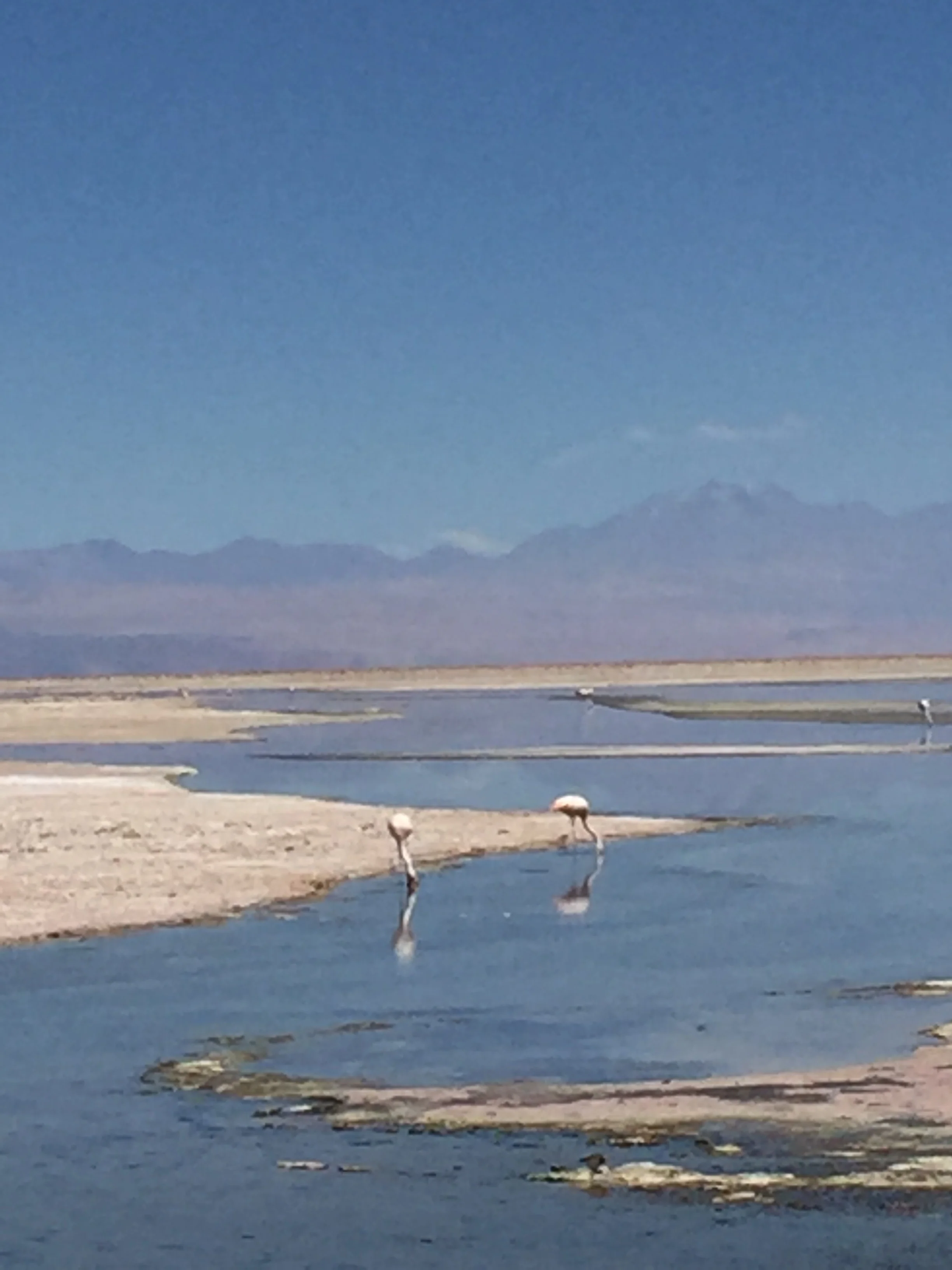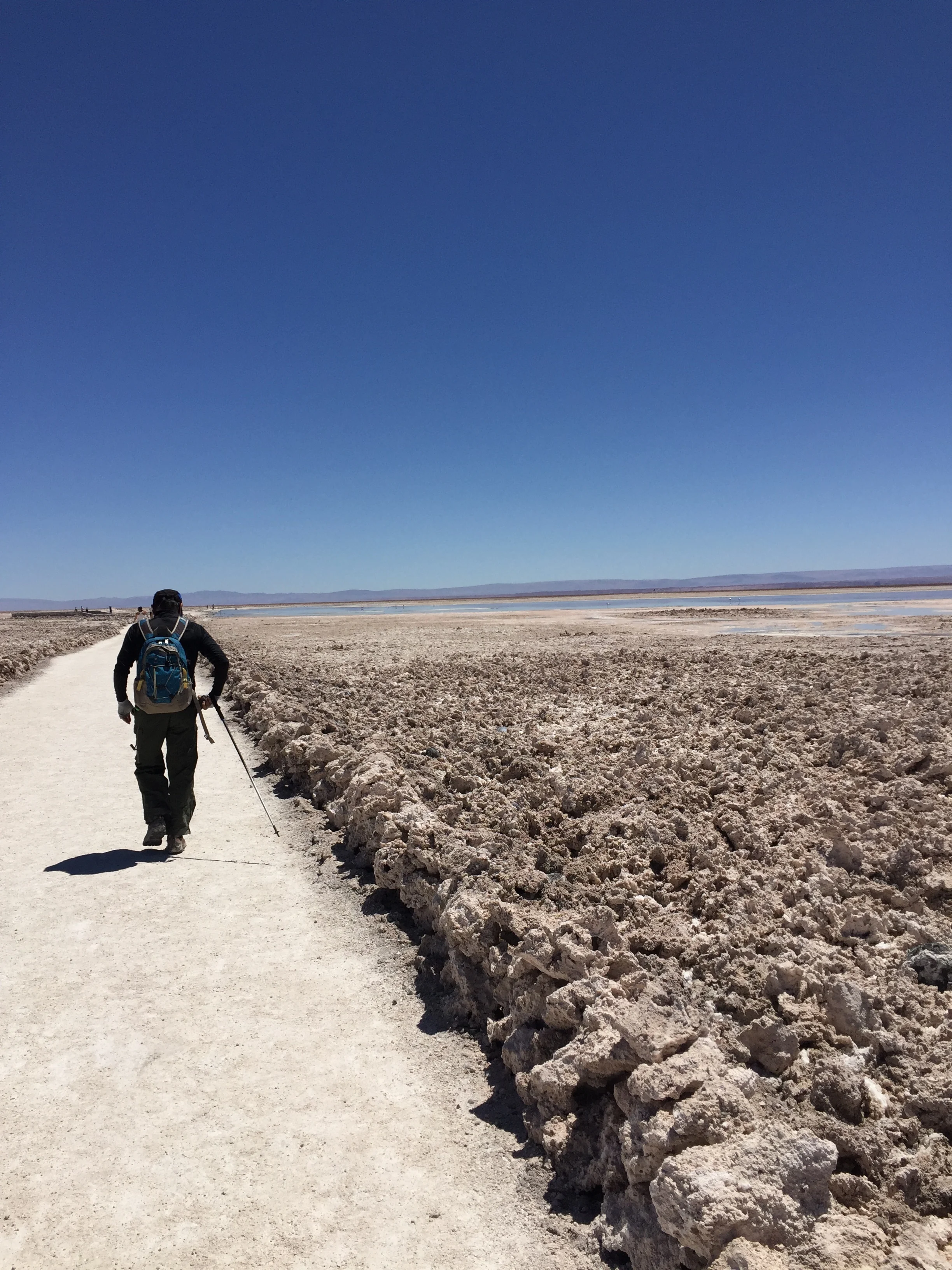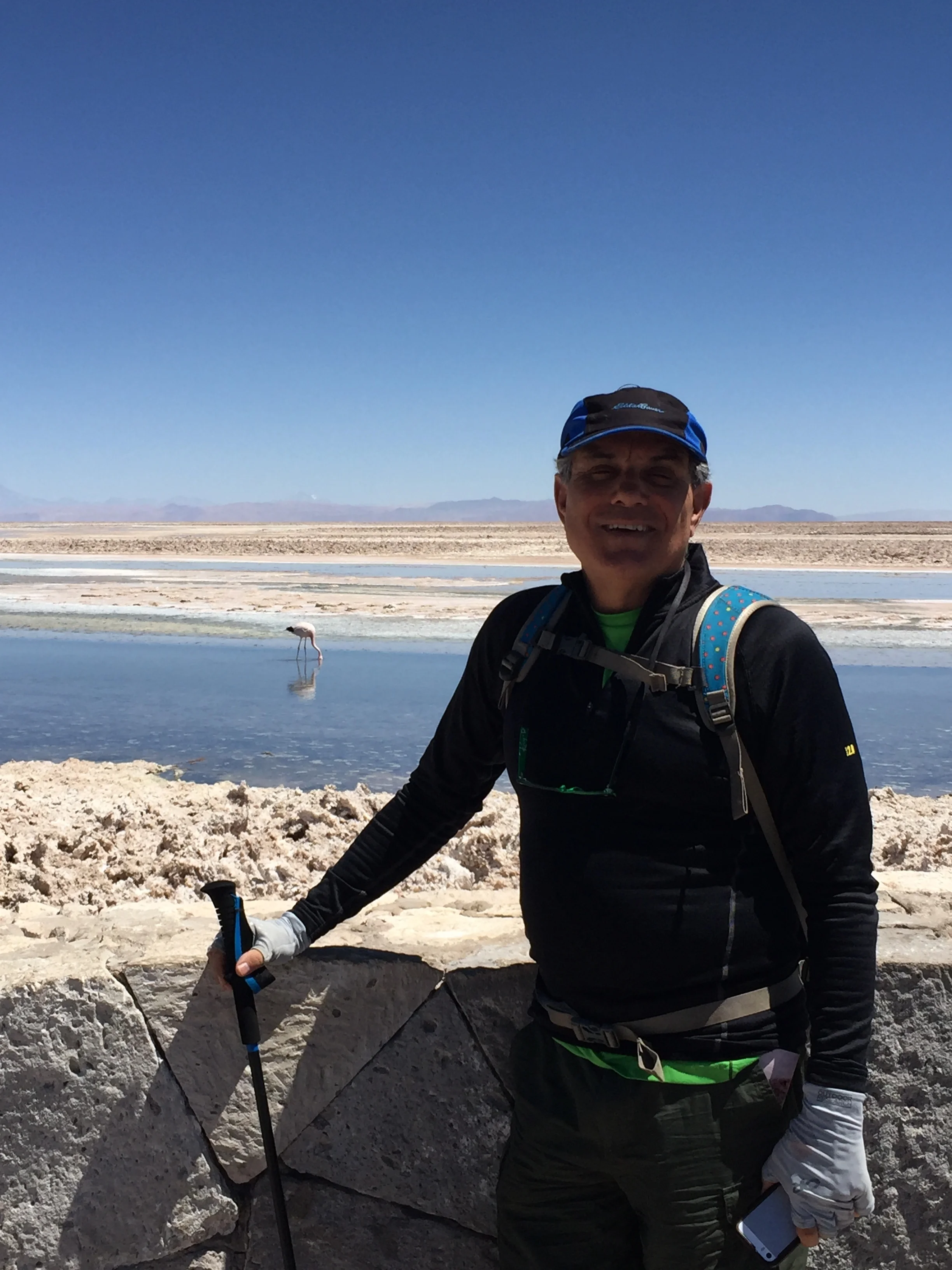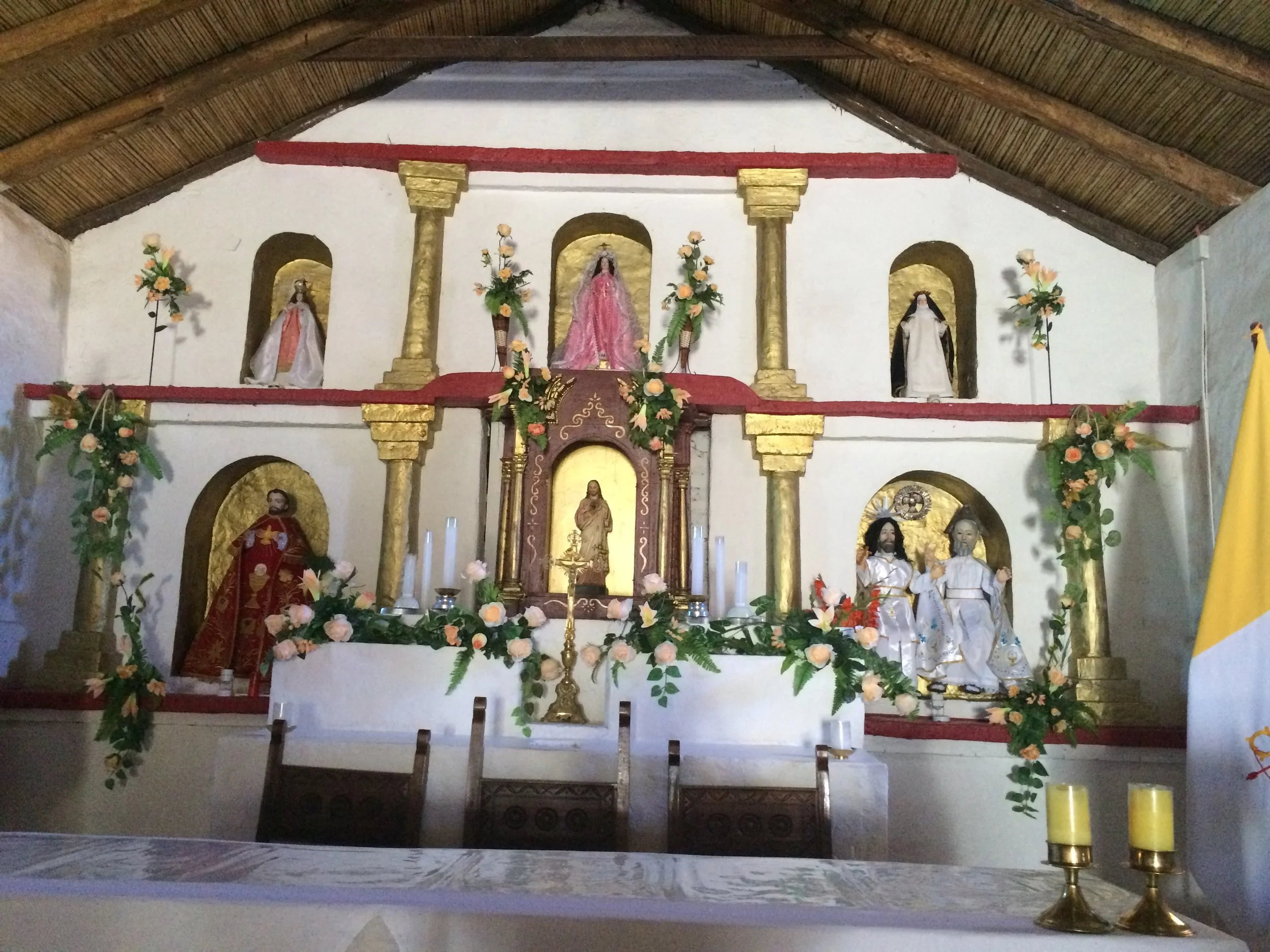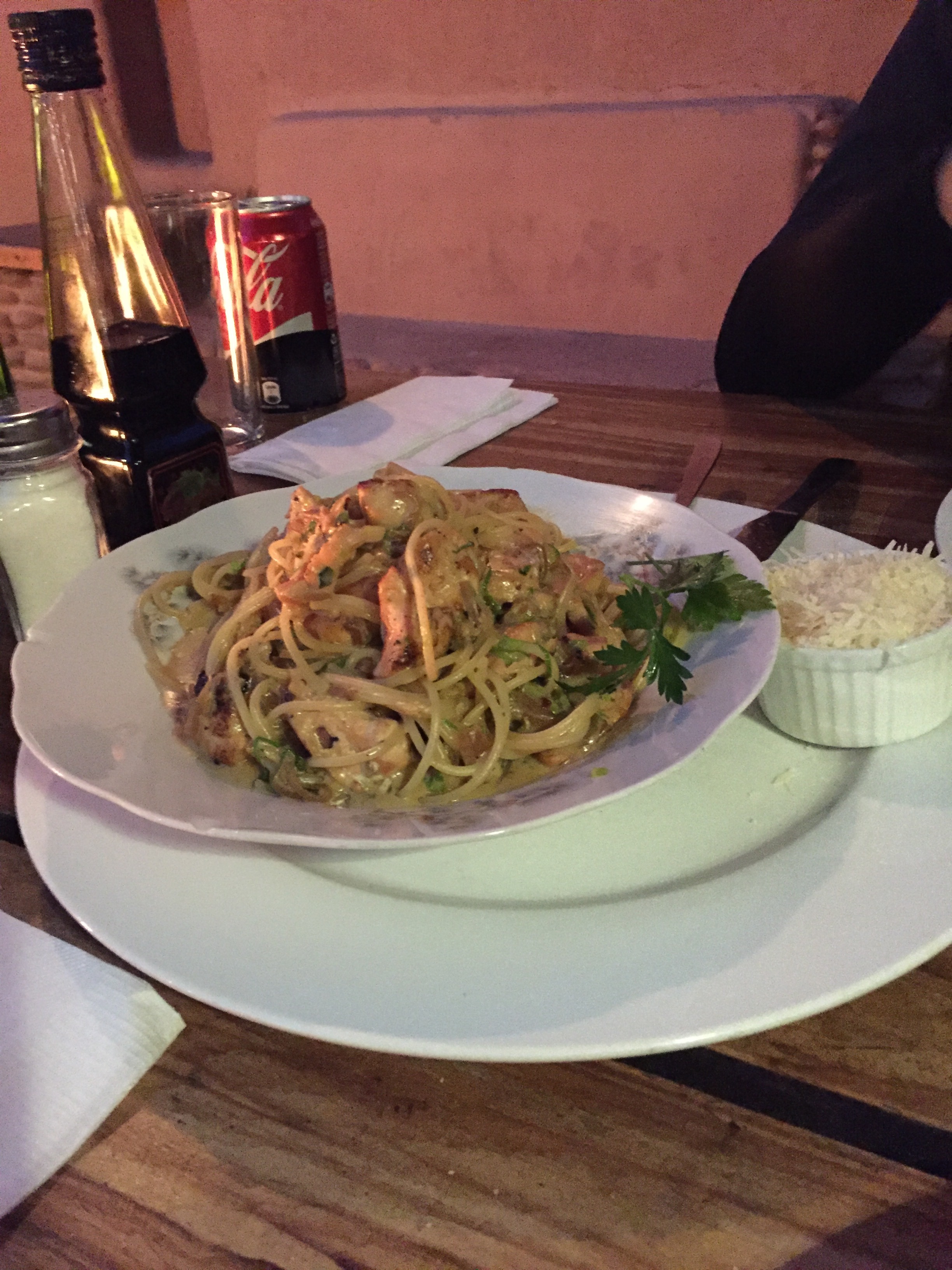The Moon Valley
We arrived at the bus station at 10 am and after a great cup of coffee we opted to head straight into town to arrange tours for our 3-night stay. San Pedro is strictly a tourist destination. The city has less than 3,000 residents and in the high season hosts over 11,000 tourists per day. It is an oasis in the middle of a desert. The streets are dirt with a paved square; the buildings are adobe style with courtyards. Dogs are everywhere, they jog with us as we walk and then lie in the middle of the streets until a car honks them out of the way. We decided to visit here first to break up our trip to Santiago, it was 12 hours from the Peru border, if we went straight to Santiago it would be a 30 hour bus trip. And second, after reading the reviews about how friendly the people are and how the landscape was like no other in South America we thought we should give it a go. It is also a big splurge for us, we knew that we could not keep to our target daily budget in this very high price town.
After reviewing and negotiating with two tour agencies that have high ratings in Lonely Planet we purchase 4 tours starting with an afternoon tour of an area known as the “Moon Valley”. After a quick sandwich we find our way to our hostel to freshen up and head back out for the tour. We have developed a routine upon arrival in new towns, find a store to purchase bottled water, food and snacks. Go to the local ATM for cash and add money to our mobile phone chip. Depending on the city these tasks can be difficult. In San Pedro all were almost impossible, starting with cash. Although our tour operator clearly had the telltale logos for visa and American Express, when we started to pay for the tour we were told that their card “machine was broken”. Broken credit card readers seems to be an epidemic in South American!! Most of our cash went for the tours so we needed cash to pay for the hostels that advertised cash only on Booking.com. The town had around 6 machines. We went to all of them and they were all broken or empty. No money, no water, no snacks. Thankfully our hostel provided bottled water. We have great hot/cold water bottles from REI but most of the hostels and some of the nicer hotels do not supply water but do advise that the water is NOT safe even for brushing our teeth.
In any event, we depart for the “Moon Valley” with a lively group of European backpackers and others. The backpackers are 2 guys from Sweden and 2 gals from Germany. They were really chatty. I think the Swedes reminded us of our sons, and in fact they had traveled the US as exchange students starting in North Dakota. They could not say enough good things about the States. The site was a short 30 minute drive away. Our first stop is at the base of some very large hills with trails to the top. The trail is steep and at some point turns to deep sand, but surprisingly it was an easy climb for us and Frank and I are one of the first of our group of 30 to reach the top. The view is outstanding. Reddish colored rocks and valleys that have a configuration like the Badlands in the US. For as far as we can see the desert has colorful hills and valleys and a far off dry lake bed. This place is spectacular, it reminds us of the movie “The Martian”; it was not filmed here but NASA does use this area to test the lunar landing equipment and the Rover for the current un-manned mission to Mars.
On the next two stops our guide explains how this area was at one time a mine for copper and salt and now it is a National Preserve. Our last stop is for the sunset viewed from a plateau on the top of a cliff that overlooks a gigantic cavern. To the west we see the sun set and remake the colors of the valley and the sky. We are told this is the best view so this giant area is crowded with all other tourists and locals. It is a great sunset but for a minute Frank and I are homesick for our beloved sunsets on Sanibel, FL.
After the tour we scout out the restaurants for dinner based on the acceptance of credit cards, our selection turns out great, with piano bar, and we sample the local dish of corn pie. This is like a thick stew of meat with olives, raisins and cornmeal, baked. It is delicious, we pair it with our staple avocado salad, this time with lots of hearts of palm, yummy.
Day two
We have a 5:00 am pick up time for today, our larger bus arrives promptly. At our last stop a high energy guide boards the bus and provides lots of information including instructions to go back to sleep without our coat on (so we will not be so cold at the site), we have a 2-hour drive. This time we have just one other English speaker, a wonderful exchange teacher from India. We arrive at the site of the geysers as the sun starts to rise and quickly follow our guide to the first site. It is cold, really cold, around 10 degrees. This area is the third largest geyser area in the world after Yellowstone and New Zealand. It is not a national park and not protected. Several years ago an energy company from Japan attempted to mine the thermal energy and destroyed one of the larger geysers, to repair the hole they ended up filing it in with concrete using the same method of capping used for an offshore oil spill. The geysers are great; none are large like Old Faithful but still it is a wonder of nature to find boiling water shooting from the earth. After touring the site our guild sets up a table complete with table cloth and lays out a breakfast of sandwiches, coffee, cake and chocolate. Frank and I realize that it is Saturday and normally we would be in East Lansing with the same table at a football tailgate, some homesick pangs in the tummy again, but thank you Spartans for the worst season ever, we surly enjoyed geysers in rural Chile over the MSU/Indiana game. Next we are offered a dip in a hot spring or a second geyser site. This hot spring is only around 80 degrees, so really just a “warm” spring; Frank and I opt for the geysers. The next stop is a wet marsh created from the melt off from the mountains. It is a breeding ground for several endangered bird species, see the pictures below. Our final stop is at a small local village to sample their unique empanadas. We thought they were more like a carnival elephant ear with cheese, not a favorite.
We are back by noon and we must move hostels. We were not able to change our original reservation by a day so we pack our things and trug through the dirt streets looking for the new hostel. After an hour in the heat of the day we finally find it, check into our room and crash for naps, showers, down time. We finally have WIFI, but still no computer, so with much difficulty manage some blog work on the IPAD and phone. The hostel has a good kitchen so Janet ventures into town for food; after an hour she resorts to prepaid sandwiches and oranges. In the three days we stayed in this town we never found a food store, just small party type stores selling junk, but then the high priced restaurants were really good. Thankfully we did find a working ATM and withdrew the maximum on both of our card. The money is Peso’s in large denominations, $100,000 pesos is $153. The maximum withdrawal is $200,000; in a cash society the money goes quick. The local people blamed the Bolivians for the money shortage, their claim was the Bolivians come across the border every day and withdraw all the money. We think that 6 ATM’s is not enough for 11,000 tourists. Too bad if we had more bucks, we could all spend more!!
Our last day has an easy 7:00 am pick up but this time we spend an hour in town going from hostel to hostel, we never did find the last hostel and 2 tourists were out of luck this day. We have the liveliest tour operator ever; a rock and roller, a drummer too, he is an engineer by trade who made a life change to spend his days in the desert with us. Our group is small, just 10 of us and we are the only English speakers. We have a very long drive and finally end at two amazing lakes, the water seems to change color depending on the angle you look at, they are surrounded by mountains and volcanos. This is truly a unique paradise. After touring the lake, we are treated again to breakfast, complete with hot coffee and chocolate. Back on the bus our guide and driver keep trying to get music to sync and when they were about to give up, I offer my IPhone and cable and low and behold it works. Our guide starts with one of our rock play lists and before you know it he is dancing in his seat with some heavy guitar and drum air playing. For the rest of the day when we were not at a site we were rock and rolling in rural Chile to our US music. We wonder how the Spanish group feels about Bon Jovi. We stop for a great group lunch and with help of google translate we have a good discussion with our fellow tour mates, they ask us about the US elections and share they opinion of how crazy they think Don Trump is. This has become such a common occurrence. Our last stop is at a vast salt flat, although it is not flat. As far as they eye can see the landscape has chunks of salt around the size of basketballs. There is a deck walkway leading to a large salt marsh full of Flamingos, this is really an odd place, very hot and windy. Why are these Flamingos here in this difficult landscape? There is shallow open water that is filled with micro shrimp on which they feed and pretty much ignore us. There are 3 variety of Flamingo in Chile; 2 types are here.
We end our tour with a short stop in another small town, 300 people live here but a great church, see the picture below
We have another great dinner before our final tour in San Pedro is for star glazing. According to our guide book, this area is the best place to see the stars in all of the Southern Hemisphere. We are picked up at 9:00 pm by bus and transported to a private home of a local Astronomer and his wife. They live outside the town surrounded by the countryside. The tour starts in their backyard with a glass of Chilean wine, chair and blanket (it is cold again) and an explanation of the stars, we break up into English speakers and Spanish speakers. The English speakers are with his wife. She takes us in the house for a full review of the consolations and a short video, we then have hot chocolate and cookies. We go back outside and our Astronomer guides us through 4 high power telescopes, pointing out Mars, Venus, Saturn, each of the brightest stars, nebula, and consolation which coordinates have been programed into the scopes. Then we are back with his wife and using a laser pointer she reviews all of the consolations with their Greek mythology background, ie. Scorpion, Taurus the bull, etc., We need to brush up on our constellations (no Big Dipper here).
Our final morning is back up early for our bus to the Airport, yes, this time we are FLYING to Santiago, we got lucky and found flights for $70 per ticket. The bus is 25 hours, an easy decision to fly.
Good bye desert and small village, next stop Santiago.

